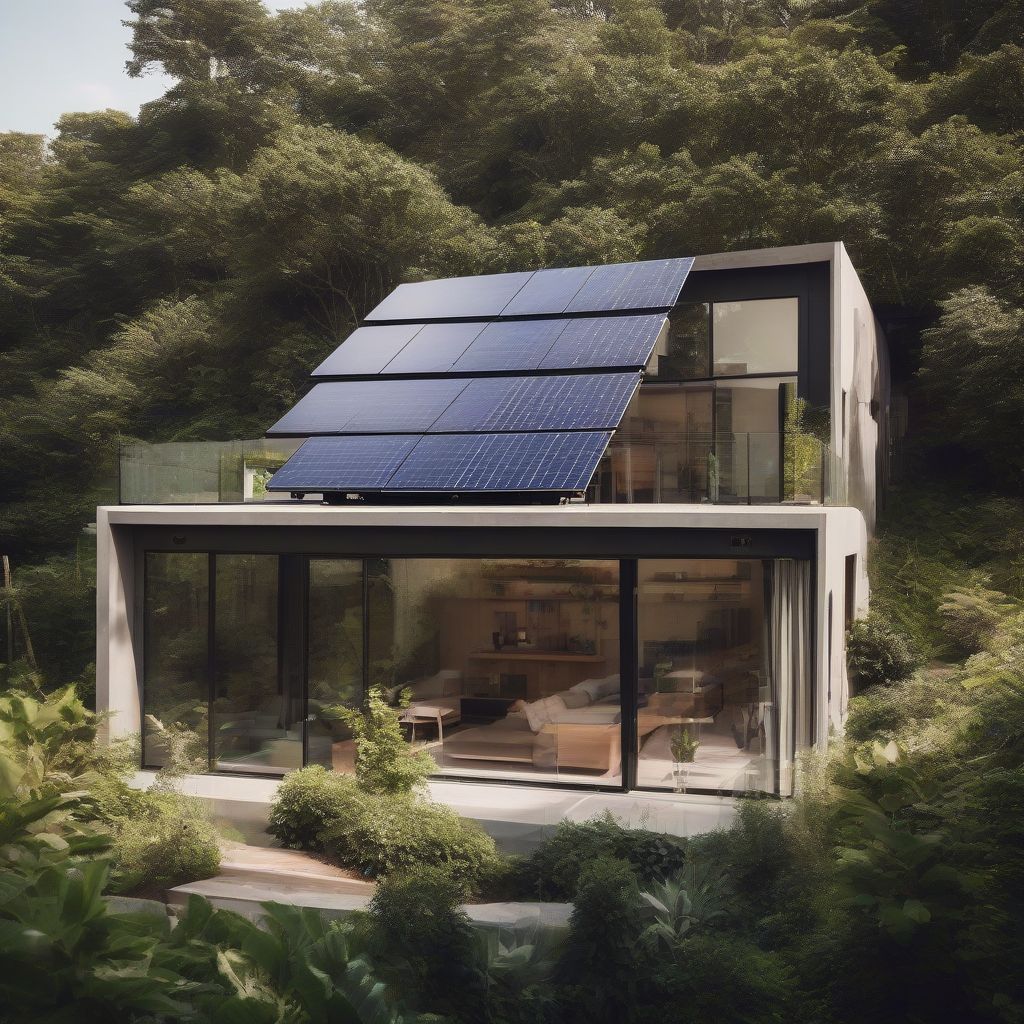Imagine a home that not only minimizes its environmental impact but also saves you money on energy bills. Sounds like a dream, right? It’s closer to reality than you might think. A zero-energy home, one that produces as much energy as it consumes, is an attainable goal, especially with the help of smart home automation. Let’s explore how you can transform your house into a model of sustainability and efficiency.
Understanding the Foundation: What is a Zero-Energy Home?
A zero-energy home, often referred to as a net-zero energy home, generates as much energy as it uses over a year. This balance is typically achieved through a combination of energy efficiency measures and on-site renewable energy generation, most commonly solar panels.
The Power of Automation in Achieving Zero-Energy
Home automation plays a pivotal role in optimizing energy consumption and maximizing efficiency. By intelligently controlling various systems within your home, automation paves the way for substantial energy savings. Let’s delve into the key areas where automation makes a difference:
1. Smart Lighting: Illuminating Efficiency
- Automated On/Off: Smart lighting systems can automatically turn lights on or off based on occupancy sensors, ensuring no energy is wasted on empty rooms.
- Daylight Harvesting: By integrating with light sensors, these systems can adjust artificial lighting levels based on the amount of natural light available.
2. Smart Thermostats: Mastering Temperature Control
- Learning Your Habits: Smart thermostats learn your temperature preferences and adjust heating and cooling accordingly, even anticipating your needs based on your schedule.
- Remote Access: Control your home’s temperature from anywhere using your smartphone, allowing you to make adjustments even when you’re away.
3. Smart Appliances: Energy-Efficient Performance
- Optimized Cycles: From washing machines to dishwashers, smart appliances can optimize their cycles to minimize water and energy usage.
- Scheduled Operation: Run energy-intensive appliances during off-peak hours when electricity rates are lower.
4. Energy Monitoring: Knowledge is Power
- Real-Time Insights: Home energy monitors provide real-time data on your energy consumption, allowing you to identify areas for improvement.
- Actionable Data: This data empowers you to make informed decisions about your energy usage habits.
Designing Your Zero-Energy Home: Key Considerations
Building a zero-energy home, or retrofitting an existing one, requires careful planning and implementation. Here are essential factors to keep in mind:
1. Orientation and Design: Harnessing Natural Elements
- Passive Solar Design: Maximize south-facing windows to capture sunlight for natural heating in the winter.
- Proper Insulation and Ventilation: Minimize energy loss through effective insulation and strategic ventilation.
2. Renewable Energy Sources: Generating Your Power
- Solar Panels: Install solar panels on your roof to convert sunlight into electricity.
- Consider Other Options: Explore other renewable energy sources like wind turbines or geothermal heat pumps depending on your location and resources.
3. Energy-Efficient Appliances and Lighting: Making Smart Choices
- Energy Star Certified: Opt for Energy Star certified appliances and LED lighting to reduce energy consumption significantly.
- Water-Saving Fixtures: Install low-flow showerheads and toilets to conserve water and reduce the energy needed for water heating.
 Energy-Efficient Home
Energy-Efficient Home
The Benefits Beyond Sustainability
Achieving a zero-energy home brings a host of benefits beyond environmental responsibility:
- Reduced Energy Bills: By generating your energy and optimizing usage, you’ll see significant savings on your monthly utility costs.
- Increased Home Value: Zero-energy homes are highly desirable and can increase your property value.
- Enhanced Comfort: Smart automation creates a more comfortable living environment with consistent temperatures and optimal lighting.
Embracing the Future of Sustainable Living
Transitioning to a zero-energy home is an investment in a more sustainable future for yourself and generations to come. By embracing energy efficiency, renewable energy, and smart home automation, you can create a home that is both environmentally friendly and financially rewarding.
[amazon bestseller=”smart home automation”]
Ready to Take the Next Step?
Transforming your home into a zero-energy haven is an attainable goal. Start by implementing small changes, such as upgrading to LED lighting or installing a smart thermostat. As you experience the benefits, you can gradually incorporate more advanced technologies like solar panels and comprehensive home automation systems. Share your thoughts and experiences in the comments below!
